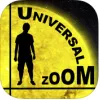
Digital Citizenship Week is October 20–24!
Join teachers worldwide to promote a healthy, positive approach to media and tech.
Take a look inside 5 images
Universal Zoom: All About Sizes and Distances
Pros: Stunning graphics, lots of fun scientific facts make learning about measurement scales fascinating.
Cons: Plenty of potential, but implementation will require time and effort.
Bottom Line: Unique, interactive way for kids to explore measurement; be prepared for the extra work required.
Use Universal Zoom: All About Sizes and Distances as an introduction to a measurement lesson. Once kids learn a little about measurement units, have them work in pairs or small groups, using the app to explore as many objects as they can. Be sure to set a time limit, such as 15 minutes, and ask kids to write a 3-2-1 summary as they explore: 3 things they learned, 2 things they found most interesting, and 1 thing they have a question about. Come together as a class and discuss their summaries. Add an extra challenge and incorporate math by having kids choose an object and unit of measure, find the object's measurement, and then convert from the selected unit to another. For example, kids could find the height of Mount Everest in miles using the app and -- without using the app -- convert its height to kilometers. Provide conversion formulas as needed.
Users are greeted with a screen with vertical and horizontal axes displaying measurement units, which can be set as metric, Imperial/U.S., or scientific. Scaled objects appear, with their heights and widths determined using the axes. Objects range from subatomic particles to DNA, cells, animals, buildings, stars, and more. Developers have done an excellent job of choosing interesting objects and using high-quality images to represent them.
Each object is labeled, and kids tap a label to learn more and compare two objects. If they tap the Great Pyramid of Giza, for example, they can learn interesting facts about the pyramid. They can also tap an Explore button to compare the pyramid to another object. This helps kids visualize differences in sizes of objects they can't directly observe, such as atoms, DNA, and stars. Kids can also explore such questions as "How many chicken eggs are as long as one ostrich egg?" or "How tall is the Statue of Liberty compared to the world's tallest tree?"
Kids explore and compare objects ranging in size from electrons to the observable universe. It's a fun tool for introducing measurement and scale concepts, and for learning interesting facts about the measured objects. One of the best features allows kids to compare two objects and visualize their size differences. Because kids don't take their own measurements, however, the learning isn't as in-depth as it could be. A built-in camera that allowed users to measure objects of their choosing and lessons about measurement conversion could greatly enhance the learning experience.











